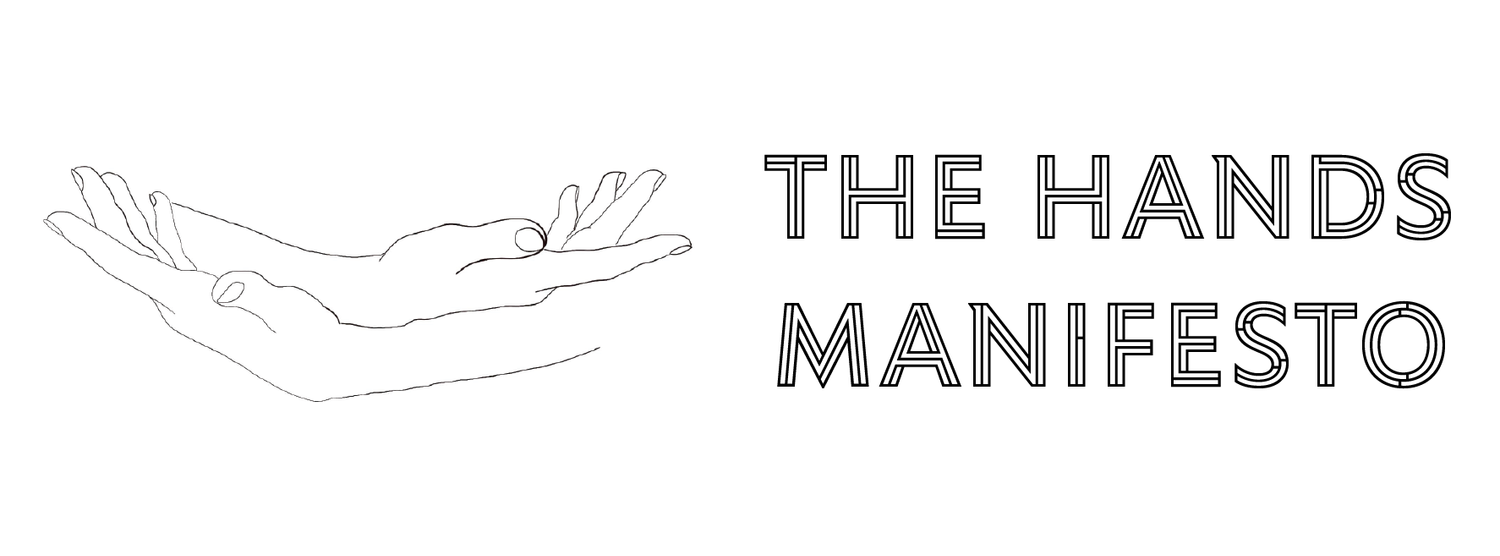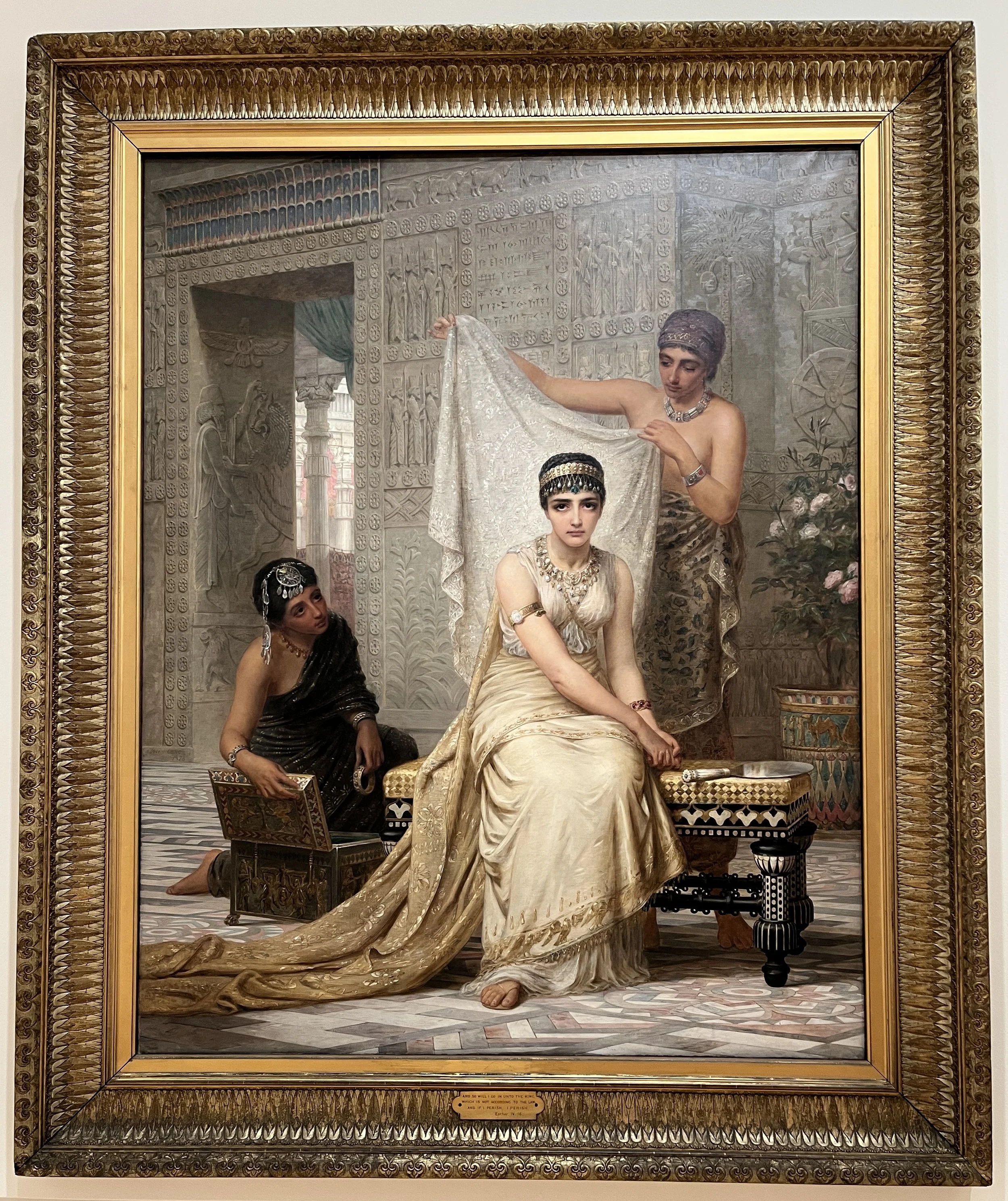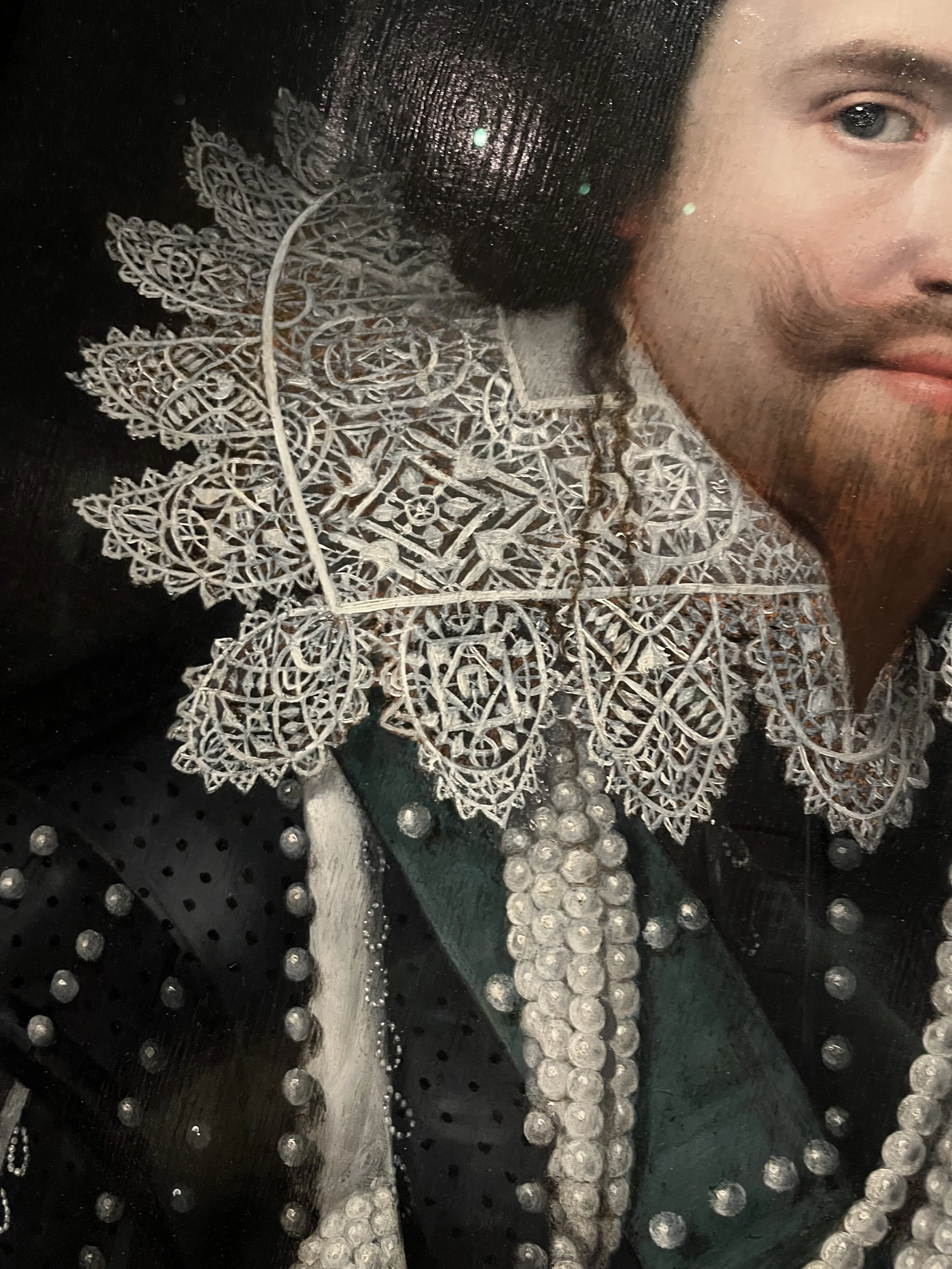Hands through time: a web of craftsmanship
A few weeks ago, I visited the National Gallery of Victoria and found myself completely captured by an oil painting by English artist Edwin Long (1829-91). The picture shows Queen Esther (from the Old Testament Book of Esther) preparing to meet her husband, Xerxes. She is expressly forbidden from seeing him without being formally summoned, so she is risking her life in planning to visit hum uninvited to plead for her people. It's weighty subject matter, reflected in the tense expressions on the faces of the Queen and her attendants. But it’s not the drama of the scene that held my attention. Instead, I was fascinated by the intricate attention to detail in the scene around them.
Queen Esther by Edwin Long (1878, oil on canvas)
Long was fascinated by reproducing accurate archaeological detail, and this painting is filled with examples. The tiles on the floor, the architecture of the room, the frieze and cuneiform covered walls, the decorative flower pot, the jewellery box on the floor, and the exquisite bench where Esther sits. To say nothing of the beautiful clothing and jewellery worn by the three women. I have no way of knowing how accurate these representations are, but I love that the painting created by his hands preserves a record in some sense of the work of so many other hands. One frieze in the background shows a warrior holding a bow and arrow in a chariot. So the painter has captured the frieze which shows the work of a stonemason, who in turn captured the work of a bow maker, a chariot builder, a wheelwright, a maker of garments and headdresses. Even further, the paint, brushes and canvas that Long used were made by yet more hands, as was the incredible frame, commissioned specially for this piece. If I had been allowed to touch the painting (I didn't - I promise!), my hand would have been akin to a time machine connecting back through the ages with the work of myriad artisans. My body was alight with the excitement at the thought.
I had a similar experience a few months ago in the Art Gallery of South Australia. I visited the Reimagining the Renaissance exhibition on a Friday evening and listened to a delightful talk about lace. I loved seeing the beautiful examples on display, but it was the painted images of lace that really blew me away. Again, the painters played this fascinating role where their hands captured the exquisitely detailed work of the lacemakers of their time. These hands in turn were reproducing historical patterns that had been worked by artisans who preceded them, and using fibres that had been painstakingly grown and spun by many more pairs of hard working hands. I'm not always good at discerning the "meaning" in a piece of art (I suspect my analytical brain gets in the way - I am just so fascinated by process!), but the craftsmanship that connects humans over centuries fascinates me.
Detail of lace from George Villiers, Duck of Buckingham by Michiel Jansz van Miereveld (1625-26, oil on wood panel)
If we travel through time in the opposite direction, I wonder how the maker of a beautifully crafted gold arm band, shaped as a bejewelled snake, would feel if they knew that their piece had endured long after being worn by the intended high status recipient. That thousands of years later it had been displayed in a museum, where it had captured the attention of a painter, and almost certainly inspired many more jewellers to create their own serpentine versions. How could they possibly have predicted that the hours of careful, detailed work invested by their hands would create such a legacy. And that it would leave yours truly pondering the infinite hands that connected that ancient jeweller to me, writing about it on my 21st century keyboard.
Detail of gold arm band from Queen Esther by Edwin Long
One of my favourite books, The Coat Route, reveals a geographical approach to this same idea. Author Meg Noonan recounts the story of an extraordinarily expensive vicuna overcoat. She journeys around the world to find the makers connected to all the components of the coat - vicuna, silk, buffalo horn, gold. These villagers, artisans, and family owned companies have stood the test of time - resisting the pressure of mass consumerism to continue producing high quality products that are good for the environment and for the workers who produce them. But again, for me, the deep fascination is that the ultimate wearer of this coat is effectively being cocooned by the many pairs of hands that touched each part of the garment. This time, instead of the legacy connecting hands through time, it connects hands geographically - from the tailor in Australia, to Peru, India, Italy, France, England and beyond.
What about if we come down from the lofty heights of paintings and haute couture for a moment? I confess to a complete weakness for reels on Instagram that show how people make things. A recent favourite is noodles - yes, you read that right. Some of the noodles on your Asian grocery shelf are made by hand - and the process is deeply fascinating. It starts with a huge ball of kneaded dough - simply flour and water. This is rolled out on a huge flat surface, then cut spiral fashion to create a long continuous coil. Using a series of processes, some simple tools, and several different pairs of hands, the coil is gradually stretched - and stretched - and stretched. Eventually when thin enough, the noodles are dried and packaged. It's so cool! But also deeply humbling. The noodles that I might have casually thrown into a bowl of soup are nourishment for me, but a way of living and working for all the hands that went in to making them. It's a privilege to eat them, and one I will pause to think about the next time I find a packet of noodles that are likely made by this process.
So many things in the world around us are actually the product of seemingly countless pairs of hands. Including the things that you make yourself. When I am stitching, the canvas I work is typically cotton. So there are the cotton farmers first, followed by the production line that takes those bolls from raw product to spun thread to woven fabric. Maybe the fabric is dyed, so there is whole other production stream there too. Most canvas has some sort of size on it to act as a stiffener, so the ingredients for that are produced, sourced, and blended somewhere too. And we haven't even started on the needles, or the fibres, or the inspiration for the designs.
It is not overstating it to say that every single piece I create, before I have worked a single stitch, starts with the work of the many hands that came before mine. And it is the same for every single artist/maker/creator/human on the planet. The next time I thread my needle or pick up those hand-stretched noodles, I'll pause to acknowledge this invisible community of makers whose work makes mine possible. Community and legacy intertwined, over time and space, are truly a force for good when we recognise what humans can achieve with this web of interconnected creativity.
How to comment
I love receiving your comments and hearing your ideas! Making a comment is easy. Just type it into the box below. If you test it with “Preview” first, the name field will show “Not Logged In” (which is a system thing I can’t change). Never fear though! When you click on “Post Comment”, a dialogue box will come up asking for your Name, Email, and Website URL. The only field that must be completed is “Name”. It can be anything you choose - full name, first name, initials, nickname. So go ahead. Let me know what you think :)



